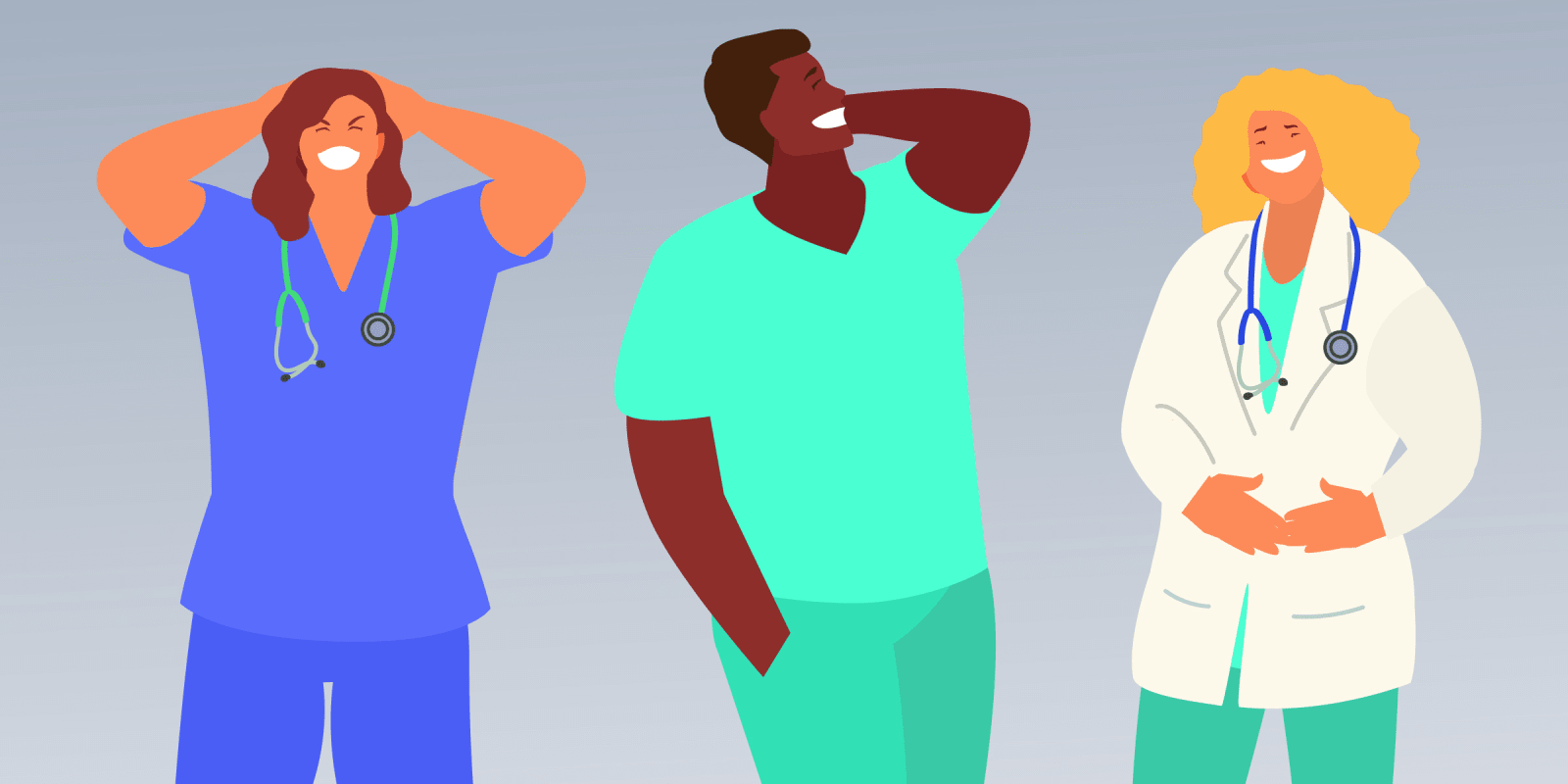Humor and medicine have a complicated relationship. In pandemic times, this is all the more apparent. Masks hide our facial expressions. Occasions for laughter in the hospital setting are few and far between. In light of this, it’s important to revisit the issue of when humor is appropriate — and when it isn’t. When do jokes go too far? When are we laughing at someone else’s expense? When does humor cross the line to being offensive or even dehumanizing?
I propose that we look to the asthma action plan to navigate this issue. The asthma action plan is a tool for patients to keep track of their symptoms at home. The concept of the asthma action plan is simple: the green zone indicates “doing well,” the yellow zone indicates “getting worse,” and the red zone indicates “medical alert.” A score in the red zone is a hard stop. The patient and the patient’s care team should pause, regroup, and change the treatment plan to prevent more harm from being done.
Similarly, humor in the green zone is innocuous and has the potential to be therapeutic. It can include funny moments in day-to-day life; for example, running into a coworker and not recognizing them behind their mask, or acquiring scrubs from the machine that are three sizes too big and covered in mysterious stains. We might laugh together with colleagues about the daily fire alarm testing and the woefully inaccurate temperature screens at the one hospital entrance that register everyone as hypothermic. This type of humor can bring us closer to our coworkers and help us feel connected to one another.
Humor in the yellow zone should make us pause. Is it appropriate to laugh? Are we laughing at the patient’s or a colleague’s expense? In psychiatry, my patients do and say unexpected things. I’ve had full conversations with people wearing underwear on their heads. Once, a woman being treated for psychosis offered me $7,000 for my unborn baby. One man decided, mid-bowel cleanse, that he preferred to pour the Miralax/Gatorade mixture on his chest rather than ingest it, causing his colonoscopy to be rescheduled. The following day, a second gastrointestinal cleanse attempt failed after he ate a bacon strip from someone else’s breakfast tray.
On the surface, these are funny anecdotes. They are also disquieting and sad, underscoring the severity of these patients’ mental illnesses. In all of these instances, I felt an urge to share with my coworkers and laugh about the absurdity of the situation. In hindsight, I wonder if I should have suppressed this urge … Is there any role for laughter at all?
If we proceed cautiously, I believe there is. Laughter can help us defuse tension and frustration and allows us to share an experience with someone else. Laughing at the situation is not akin to laughing at the patient, but there is certainly a fine line separating the two.
Humor in the red zone should sound alarm bells. This is the humor from Samuel Shem’s "The House of God" — the world of GOMERs (Get Out of My Emergency Room) and turfing patients. It is condescending, derogatory, and dehumanizing. It pits members of the medical team against one another. I have witnessed multiple types of “red zone” humor in my training in pediatrics and psychiatry. Sometimes, it takes the form of laughing at a colleague or group of individuals, such as targeting the nurse with “stupid” questions or picking on the “incompetent” resident who doesn’t know what’s going on.
In “red zone” humor, patients are targets, too. At well-child checks and in the newborn nursery, I’ve seen members of the medical team ridicule uncommon names or unique spellings and punctuation choices. Laughing at given names represents a thinly veiled critique of class, education level, socioeconomic status, and race. It is similar to imitating patients’ accents and grammatical errors, something that also occurs and should not be condoned.
This final type of humor is toxic and burnout-inducing. Like a score in the red zone on the asthma action plan, it should prompt intervention and self-reflection. Too often, we are passive bystanders and let these comments go without voicing our opinions. But tuning out these remarks doesn’t go far enough. Let’s challenge ourselves to take action and speak up. This is the only way we’ll break the cycle.
Phoebe Prioleau, MD is a first-year child psychiatry fellow in the Post-Pediatric Portal Program at Children’s Hospital of Philadelphia. Prior to fellowship, she completed pediatrics residency at UH Rainbow Babies and Children’s Hospital in Cleveland, OH. She studied French literature and art history before medical school and has published creative work on Doximity's Op-Med platform, The Living Hand, Annals of Internal Medicine, and The Journal of Medical Humanities, among other places. She has no conflicts of interest to disclose. Phoebe was a Doximity 2019–2020 Fellow and is a 2020–2021 Doximity Op-Med Fellow.
Image by artbesouro / Shutterstock







